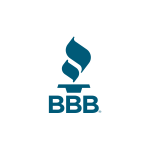Planning for retirement involves not just saving money but doing so in a way that maximizes potential growth and minimizes taxes. Tax-advantaged retirement accounts are powerful tools in this endeavor. This blog will explore the various types of tax-advantaged accounts and how you can leverage them for the maximum benefit, with insights from Care Financial Services.
- Understanding Tax-Advantaged Accounts
Tax-advantaged retirement accounts are designed to encourage saving for retirement by offering tax benefits. There are two primary types: tax-deferred and tax-exempt accounts.
- Tax-Deferred Accounts (like Traditional IRAs and 401(k)s): Contributions are made with pre-tax dollars, reducing your taxable income for the year. Taxes are paid later when you withdraw funds during retirement.
- Tax-Exempt Accounts (like Roth IRAs and Roth 401(k)s): Contributions are made with after-tax dollars, but withdrawals, including earnings, are tax-free in retirement.
- Traditional IRAs and 401(k)s: The Benefits of Tax Deferral
With Traditional IRAs and 401(k)s, you can lower your current taxable income. This is particularly advantageous if you expect to be in a lower tax bracket in retirement. Care Financial can assist in determining if this approach aligns with your financial situation and long-term goals.
- Roth IRAs and Roth 401(k)s: The Advantage of Tax-Free Growth
Roth accounts are ideal if you anticipate being in a higher tax bracket in retirement, or if you prefer tax-free withdrawals. Although you pay taxes upfront, the ability for your money to grow tax-free can significantly benefit your long-term savings. Care Financial can help evaluate if Roth accounts are suitable for your retirement plan.
- 401(k) Plans: Employer Contributions and High Contribution Limits
401(k) plans often include employer match contributions, which can substantially enhance your retirement savings. They also have higher contribution limits compared to IRAs, allowing you to save more each year. Care Financial can guide you in optimizing your contributions to maximize these benefits.
- Health Savings Accounts (HSAs): An Overlooked Retirement Tool
While HSAs are primarily for healthcare expenses, they can also serve as a retirement savings vehicle. Contributions are tax-deductible, growth is tax-free, and withdrawals for qualified medical expenses are tax-free. After age 65, funds can be withdrawn for any purpose without penalty, though non-medical withdrawals are subject to income tax.
- Utilizing Multiple Accounts for Diversified Tax Benefits
Diversifying across different types of accounts can balance your tax situation now and in retirement. Care Financial can assist in creating a strategy that includes a mix of tax-deferred and tax-exempt accounts based on your unique financial landscape.
- Regular Reviews and Adjustments
Retirement planning is dynamic, and regular reviews are essential. Care Financial offers ongoing support to adjust your retirement strategy as your circumstances and tax laws change.
Maximizing the benefits of tax-advantaged retirement accounts requires a strategic approach tailored to your individual needs and goals. Care Financial Services specializes in creating personalized retirement plans that leverage these accounts for your financial benefit. By partnering with us, you can ensure that you are making the most of the tax advantages available, setting the stage for a more secure and prosperous retirement.


